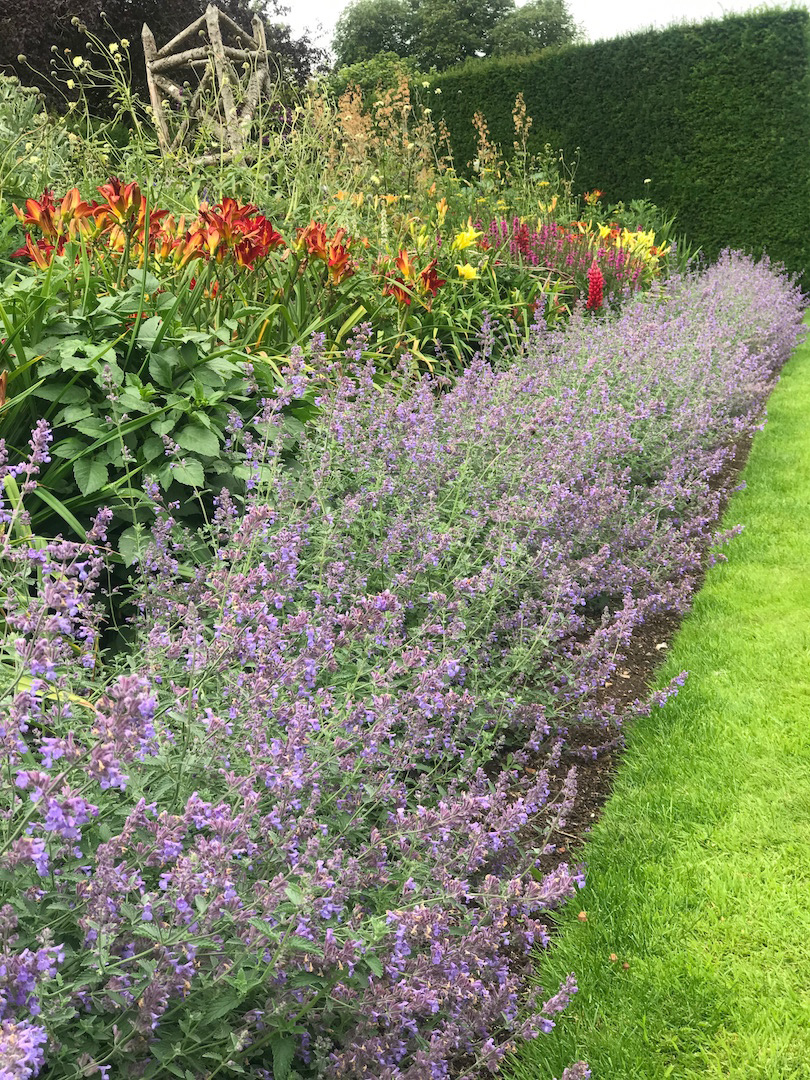The one thing you need to do now for beautiful summer borders, according to Monty Don
Make sure your blooms look their very best with tips from TV gardening expert Monty Don


In July garden borders should be creating a fabulous impact with color, shape, texture and scent to delight us whenever we’re in the garden, as well as providing wonderful views from the window whenever we look out.
But gardening expert, writer and broadcaster Monty Don has drawn our attention to a frequent consequence of the July weather that means the beauty of borders can be compromised. The burst of growth the conditions bring can mean toppling plants, and if you don’t want to see your display spoiled this way, it’s time to take action and stake them.
For Monty’s advice on keeping plants looking their best by staking, just read on. Want to find out how to plan, design and plant your flowerbeds? Just visit our guide to garden borders.
Monty Don’s top tips on staking plants in borders

Monty Don explained how to stake garden borders to keep them looking their best on his website. Now we’re sharing his top tips along with some advice of our own.
1. It’s the warmth of July plus the wetness that can lead borders to look less than lovely, according to Monty. The conditions mean a burst of growth that plants can’t support, he says.
The upshot is toppling plants as they outgrow themselves. Add rain, winds or storms to the mix and the result is a disaster zone in Monty’s words.
2. To help plants stay upright in your flowerbed ideas, staking is the answer. But you need to be subtle about it to follow Monty’s lead. His tip is that staking should not be apparent.
3. To get the job done, you’ll require metal supports, or hazel pea sticks or similar, Monty says.
He recommends working round the border and gently easing the toppled plants upright. This way, he says, they will get support but the border won’t look rigid, which would detract from its charms.

4. Which plants might need staking? It’s the taller annuals, Monty says, including the ones he grows in his own garden, Longmeadow, like sunflowers, tithonias, Ammi majus, cleomes, Cosmos Sensation and Leonotis (aka lion’s tail).
For these, Monty stakes to half way and ties them with soft twine which still allows some movement. Follow this rule for all plants, as they should be able to move in the wind. There's also more growing tips in our guide on how to grow sunflowers.
5. It can also be a good idea to stake shorter herbaceous perennials at the front of borders because it will stop them flopping over the edge of the lawn. This has the side effect of damaging the grass, so it’s something you’ll want to do to keep your lawn ideas in good shape as well.
Think front of border choices like penstemons, nepeta and yarrow, which can all be prevented from flopping by staking.

6. When you’re staking, use twine in a figure of eight that leaves it in between an individual stem and the support to prevent rubbing.
7. If the weather gets to your border before you have a chance to stake or reaps havoc despite your efforts, you’ll have to deal with stems that have snapped or are badly bent. The best tactic is to cut them cleanly (having the best secateurs to hand is a good idea for this task), and if the flowers are still looking good, enjoy them as a display inside your home.
You should add supports to the border after an event like this because it will stop things getting worse and help out the nearby plants on to which others have toppled.

Sarah is a freelance journalist and editor writing for websites, national newspapers, and magazines. She’s spent most of her journalistic career specialising in homes and gardens and loves investigating the benefits, costs and practicalities of home improvement. It's no big surprise that she likes to put what she writes about into practice, and is a serial house revamper.
